We live in a world of information overload. If 10 years ago it was hard to find content at all, now there’s way too much of it! Which one is good? Which one is bad? We don’t know.
While this subject is very complex, it’s clear that Google is attempting to solve these content issues in its search results. One of the biggest issues they’ve encountered in the digital marketing world is what they call thin content.
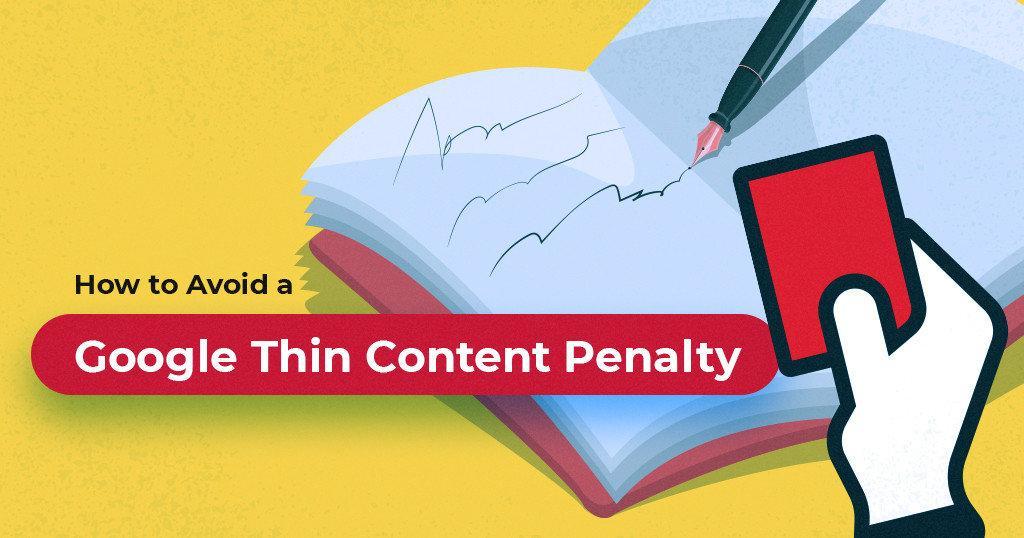
But what exactly is thin content? Should you worry about it? Can it affect your website’s SEO in a negative way? Well, thin content can get your site manually penalized but it can also sometimes send your website in Google’s omitted results. If you want to avoid these issues, keep reading!
- What Is Thin Content & How Does It Affect SEO?
- How to Identify Thin Content Pages
- How to Fix Thin Content Issues & Avoid a Google Penalty
1. What Is Thin Content & How Does It Affect SEO?
Thin content is an OnPage SEO issue that has been defined by Google as content with no added value.
When you’re publishing content on your website and it doesn’t improve the quality of a search results page at least a little bit, you’re publishing thin content.
For a very dull example, when you search Google for a question such as “What color is the sky?” and there’s an article out there saying “The sky is blue!”, if you publish an article with the same answer you would be guilty of adding no value.
So does it mean that this article is thin content because there are other articles about thin content out there?
Well.. no. Why? Because I’m adding value to it. First, I’m adding my own opinion, which is crucial. Then, I’m trying to structure it as logically as possible, address as many important issues as I can and cover gaps which I have identified from other pieces.
Sometimes, you might not have something new to say, but you might have a better way of saying it. To go back to our example, you could say something like “The sky doesn’t really have a color but is perceived as blue by the human eye because of the way light scatters through the atmosphere.”
Of course, you would probably have to add at least another 1500 words to that to make it seem like it’s not thin. It’s true. Longer content tends to rank better in Google, with top positions averaging about 2000 words.

How your content should be to rank
Sometimes, you might add value through design or maybe even through a faster website. There are multiple ways through which you can add value. We’ll talk about them soon.
From the Google Webmaster Guidelines page we can extract 4 types of practices which are strictly related to content quality. However, they are not easy to define!
- Automatically generated content: Simple. It’s content created by robots to replace regular content, written by humans. Don’t do it. But… some AI content marketing tools have become so advanced that it’s hard to distinguish between real and automatically generated content. Humans can write poorly too. Don’t expect a cheap freelancer who writes 1000 words for $1 to have good grammar and copy. A robot might be better. But theoretically, that’s against the rules.
- Thin affiliate pages: If you’re publishing affiliate pages which don’t include reviews or opinions, you’re not providing any new value to the users compared to what the actual store is already providing on their sales page.
- Scraped or copied content: The catch here is to have original content. If you don’t have original content, you shouldn’t be posting it to claim it’s yours. However, even when you don’t claim it’s yours, you can’t expect Google to rank it better than the original source. Maybe there can be a reason (better design, faster website) but, generally, nobody would say it’s fair. Scraping is a no no and Google really hates it.
- Doorway pages: Doorway pages are pages created to target and rank for a variety of very similar queries. While this is bad in Google’s eyes, the search giant doesn’t provide an alternative to doorway pages. If you have to target 5-10 similar queries (let’s say if you’re doing local SEO for a client), you might pull something off with one page, but if you have to target thousands of similar queries, you won’t be able to do it. A national car rental service, for example, will always have pages which could be considered doorways.
If you want, you can listen to Matt Cutts’ explanation from this video.
As you can see, it all revolves around value. The content that you publish must have some value to the user. If it’s just there because you want traffic, then you’re doing it wrong.
But value can sometimes be hard to define. For some, their content might seem as the most valuable, while for others it might seem useless. For example, one might write “Plumbing services New York, $35 / hour, Phone number”. The other might write “The entire history of plumbing, How to do it yourself, Plumbing services New York, $35 / hour, Phone number.”
Which one is more relevant? Which one provides more value? It really depends on the user’s intent. If the user just wants a plumber, they don’t want to hear about all the history. They just want a phone number and a quick, good service.
However, what’s important to understand is that there is always a way to add value.
In the end, it’s the search engine that decides, but there are some guidelines you can follow to make sure Google sees your content as valuable. Keep reading and you’ll find out all about them. But first, let’s better understand why thin content is still an issue and how it actually affects search engine optimization.
1.1 Is Thin Content Still a Problem in 2019?
The thin content purge started on February 23, 2011 with the first Panda Update. At first, Google introduced the thin content penalty because many people were generating content automatically or were creating thousands of irrelevant pages.

The series of further updates were successful and many websites with low quality content got penalized or deranked. This pushed site owners to write better content.
Unfortunately, today this mostly translates to longer content. The more you write, the more value you can provide, right? We know it’s not necessarily the case, but as I’ve said, longer content does tend to rank better in Google. Be it because the content makes its way up there or because the search engine is biased towards it… it’s hard to tell.
But there’s also evidence that long form content gets more shares on social media. This can result in more backlinks, which translates to better rankings. So it’s not directly the fact that the content is long, but rather an indirect factor related to it.
It’s kind of ironic, as Google sometimes uses its answer boxes to give a very ‘thin’ answer to questions that might require more context to be well understood.
However, in 2019 it’s common SEO knowledge that content must be of high quality. The issue today shifts to the overload of content that is constantly being published. Everything is, at least to some extent, qualitative.
But it’s hard to get all the information from everywhere and you don’t always know which source to rely on or trust. That’s why content curation has been doing so well lately.
This manifests itself in other areas, especially where there’s a very tough competition, such as eCommerce.
1.2 How Does Thin Content Affect SEO?
Google wants to serve its users the best possible content it can. If Google doesn’t do that, then its users won’t return to Google and could classify it as a poor quality service. And that makes the search engine unhappy.
Google generally applies a manual action penalty to websites it considers to contain thin content. You will see it in the Google Search Console (former Google Webmaster Tools) and it looks like this:

However, your site can still be affected by thin content even if you don’t get a warning from Google in your Search Console account. That’s because you’re diluting your site’s value and burning through your crawl budget.
The problem that search engines have is that they constantly have to crawl a lot of pages. The more pages you give it to crawl, the more work it has to do.
If the pages the search engine crawls are not useful for the users, then Google will have a problem with wasting its time on your content.
1.3 Where Is Thin Content Found Most Often?
Thin content is found most of the time on bigger websites. For the sake of helping people that really need help, let’s exclude spammy affiliate websites and automated blogs from this list.
Big websites, like eCommerce stores, often have a hard time coming up with original, high quality content for all their pages, especially for thousands of product pages.
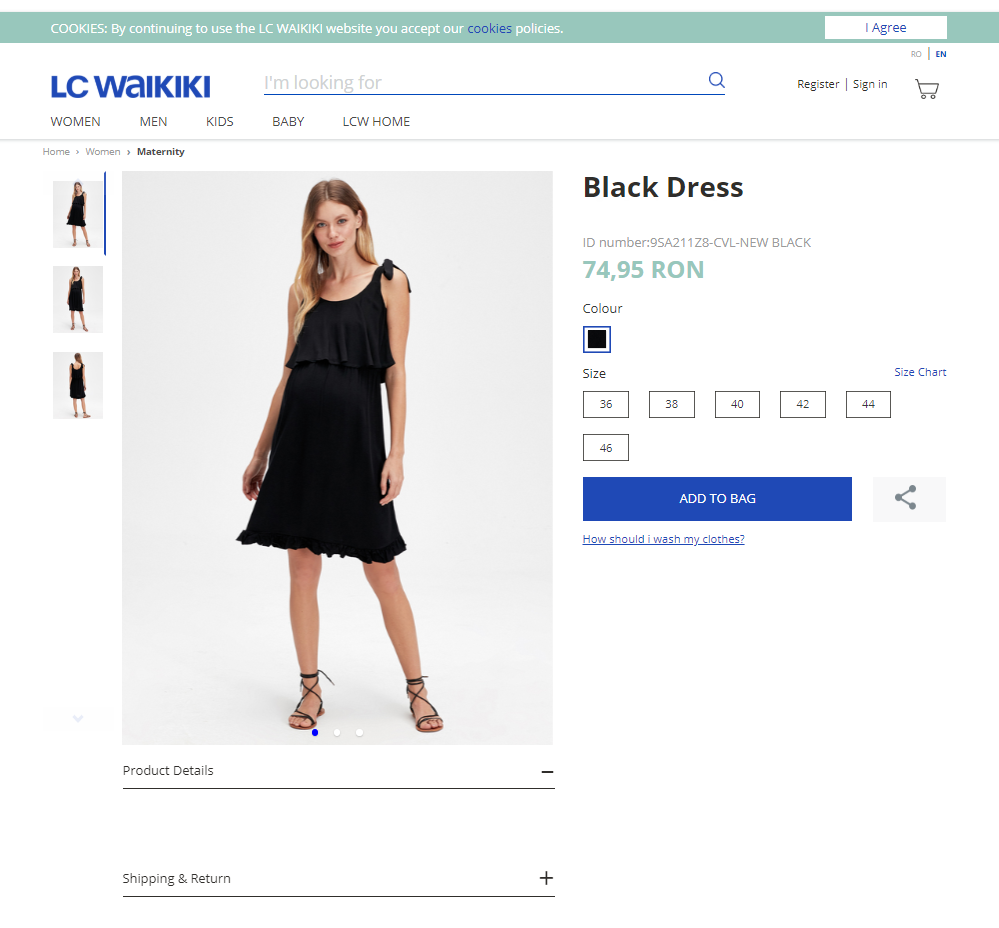
In the example above, you can see that although the Product Details section under the image is expanded, there’s no content there. This means that users don’t have any details at all about the dress. All they know is that it’s a dress, it’s black and it costs about $20.
This doesn’t look too bad when you’re looking as a human at a single page, but when you’re a search engine and take a look at thousands and thousands of pages just like this one, then you begin to see the issue.
The solution here is to add some copy. Think of what users want to know about your product. Make sure you add the details about everything they might want to know and make them easily accessible!
Sometimes, thin content makes its way into eCommerce sites unnoticed. For example, you might have a category page which hosts a single product. Compared to all your other categories or competitor websites,that can be seen as thin content.
2. How to Identify Thin Content Pages
If we are referring merely to its size, then thin content can be easily identified using the cognitiveSEO Tool’s Site Audit.
Did you know?
Identifying thin content is actually really easy with a tool like cognitiveSEO Site Audit. The tool has a Thin Content section where you can easily find the pages with issues.
It’s as simple as that! Once you have your list, you can export it and start adding some content to those pages. This will improve their chances to make it to the top of the search results.
However, you also want to take a look at the duplicate content section in the Site Audit tool. This can also lead to a lot of indexation & content issues.
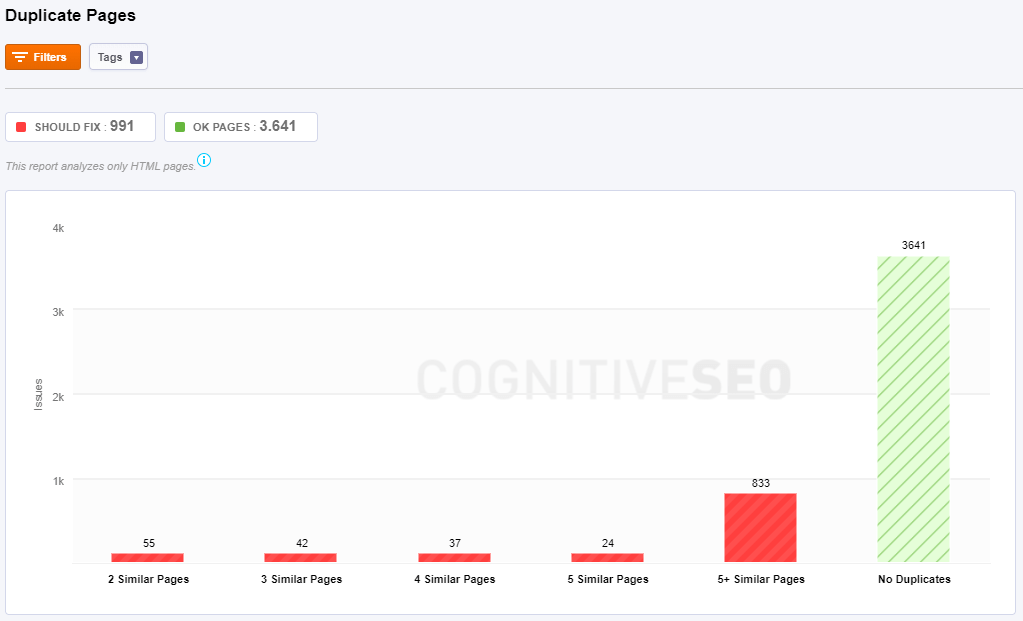
Extremely similar pages can be “combined” using canonical tags. Sometimes it can be a good idea to remove them completely from the search engine results.
3. How to Fix Thin Content Issues & Avoid a Google Penalty
Sometimes, you can fix thin content issues easily, especially if you get a manual penalty warning. At least if your website isn’t huge. If you have thousands of pages, it might take a while till you can fix them.
Here’ s a happy ending case from one of Doug Cunnington’s students:
However, the “penalty” can also come from the algorithm and you won’t even know it’s there because there is no warning. It’s not actually a penalty, it’s just the fact that Google won’t rank your pages because of their poor quality.
When that’s the case, it might not be as easy to get things fixed as in the video above.
In order to avoid getting these penalties, here’s a few things that you should consider when you write content.
3.1 Make sure your site looks legit
First of all, if your website looks shady, then you have a higher chance of getting a manual penalty on your website. If someone from Google reviews your website and decides it looks spammy at a first glance, they will be more likely to consider penalizing it.
To avoid this, make sure you:
- Use an original template and customize it a little bit
- Have a logo or some sort of original branding
- Provide an about page and contact details
3.2 Add more content & avoid very similar titles
The best way to show Google that your pages are worth taking a look at is to not leave them empty. In 2019, I hope we all know that for good OnPage SEO we need to add a little bit more content.
Your pages should have at least 300 words of copy. Notice how I say copy, not words. If you’re there to sell, write copy. Even on an eCommerce product page.
If you’re not sure what to write about, you can always use the CognitiveSEO Keyword Tool & Content Assistant. It will give you ideas on what you should write on your pages to make them relevant for the query you want them to rank on.
Automatically generated titles can also quickly trigger Google’s alarms. If you review multiple products from the same brand and your titles are like this:
- Nike Air Max 520 Review
- Nike Air Max 620 Review
- Nike Air Max 720 Review
then you can see how it might be an issue. Do those articles provide any value or are they all the same except for one digit?
It’s important to have the keywords in your title, but you can also try to add some diversity to them. It’s not always very hard to do. A good example could be:
- Nike Air Max 520 Review | Best bang for the buck
- Nike Air Max 620 | A Comprehensive Review Regarding Comfort
- Nike Air Max 720 | Review After 2 Weeks of Wearing Them at The Gym
But Adrian, I have an eCommerce site with over 2000 products, I can’t write original titles for all of them!
That’s why I said that content isn’t the only way you can provide value with. If you can’t change the titles and content, improve some other areas.
However, the truth is that there’s someone out there who does optimize and show love to all their titles, even if there are 2000 of them. So why shouldn’t they be rewarded for it?
Usually, very similar titles are a result of content duplication issues. If you have a product that comes in 100 different colors, you don’t necessarily need to have 100 different pages with 100 unique titles and copy. You can just make them 1 single page where users can select their color without having to go to another URL.
Combining pages can also be done via canonical tags, although it’s recommended to only keep this for duplicate content. Pages with different colors can count as duplicate content, as only one word is different, so the similarity is 99.9%.
Make sure that the pages that get canonicalized don’t provide organic search traffic. For example, if people search for “blue dress for ladies” then it’s a good idea to have a separate page that can directly rank for that query instead of canonicalizing it to the black version.
A proper faceted navigation can help you solve all these SEO issues.
3.3 Don’t copy content
Copying content from other websites will definitely make your site look bad in Google’s eyes.
Again, this happens mostly on eCommerce websites, where editors get the descriptions directly from the producer’s official website. Many times they also duplicate pages in order to save time and just change a couple of words.
On the long run, this will definitely get you into duplicate content issues, which can become very hard to fix once they’re out of control. It will also tell Google that your site endorses competitors. By using their copy, you’re considering it valuable, right?
3.4 Web design, formatting & ads
Sometimes, you can identify gaps in web design or formatting. That’s not easy to do, as you’ll have to manually take a look at your competitor’s websites. Here are some questions you should ask yourself:
Are competitors presenting their information in an unpleasant manner? Do they have too many pop-ups, too many ads or very nasty designs?
Then that’s obviously where you can make a difference. This doesn’t give you the right not to have an original copy, but it might have a greater impact.

Source: premiumcoding.com
3.5 Video, images, text, audio, etc.
Big, successful eCommerce businesses which have an entire community supporting them and backing them up have used this technique for a long time: video content.
This might work better in some niches, such as tech. In Romania, cel.ro has a very bad reputation with delivery and quality, yet it still has a decent amount of market share due to its strong video content marketing strategy.
If you want to improve the value of your page, make sure you add images, videos or whatever you think might better serve your user. If you’re a fashion store, images might be your priority, while if you’re an electronics store, the product specifications should be more visible instead.
3.6 Deindex useless pages
Sometimes, when you have a lot of very similar pages that host thin content with no added value, the only viable solution is to remove those pages completely.
This can be done in a number of ways. However, the best ones are:
- Removing the content altogether
- Using canonical tags to combine them
- Using robots.txt & noindex
However, you’ll have to choose carefully which method you use. Remember, you don’t want to remove those pages with search demand from the search engines!
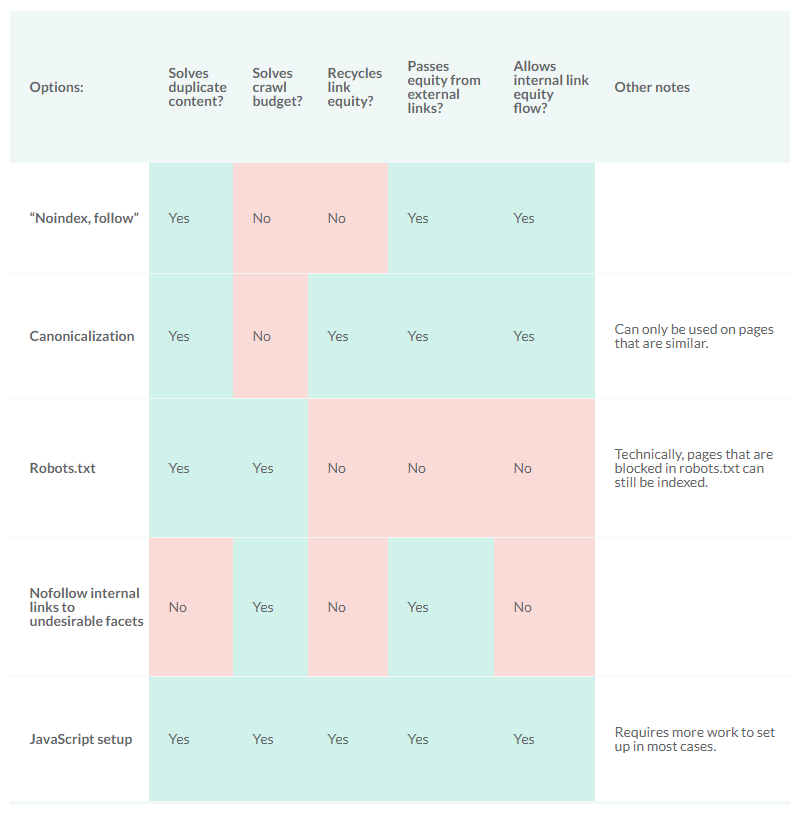
Source: Moz.com
This can determine you to switch the focus from optimizing individual product pages to optimizing category pages.
Conclusion
Thin content is definitely bad for your website. It’s always better to avoid an issue from the beginning than to have to fix it later on. This saves you both time and money.
However, you’ll have to know about these issues early on, before you even start setting up your website and content marketing strategy. Hopefully, this article helped you have a better understanding on the topic.
Have you ever faced thin content issues on your websites in your digital marketing journey? How do you identify it? And how did you solve these content issues? Let us know in the comments section below!

 Site Explorer
Site Explorer Keyword tool
Keyword tool Google Algorithm Changes
Google Algorithm Changes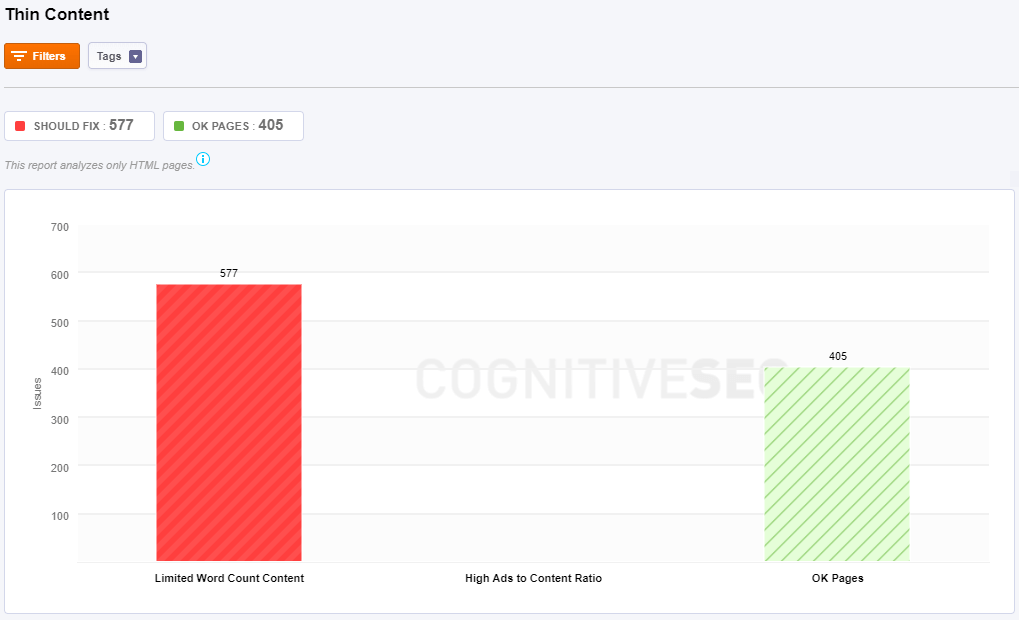


I am an “old school” guy, so I make my content wisely. Give people what they need and you will have an audience.
Wise words!
Can you help me to find free tools that useful to find all thin content??
Good free tools for this… pretty hard to find 🙂 Maybe something like a screaming frog alternative that is self hosted on your PC but it will take a lot of time if you don’t have a strong CPU. Way easier with the CognitiveSEO Site Audit Tool
Thanks for linking to the cognitiveSEO Site Audit tool. I also like using the Copyscape Plagiarism Checker tool. https://www.copyscape.com/ It accurately checks for any copied content.
I love cognitiveseo.com
I think it’s a great site!
I’m really curious about pages that aren’t content like home, about, etc. Does it have to reach a certain number of words too?